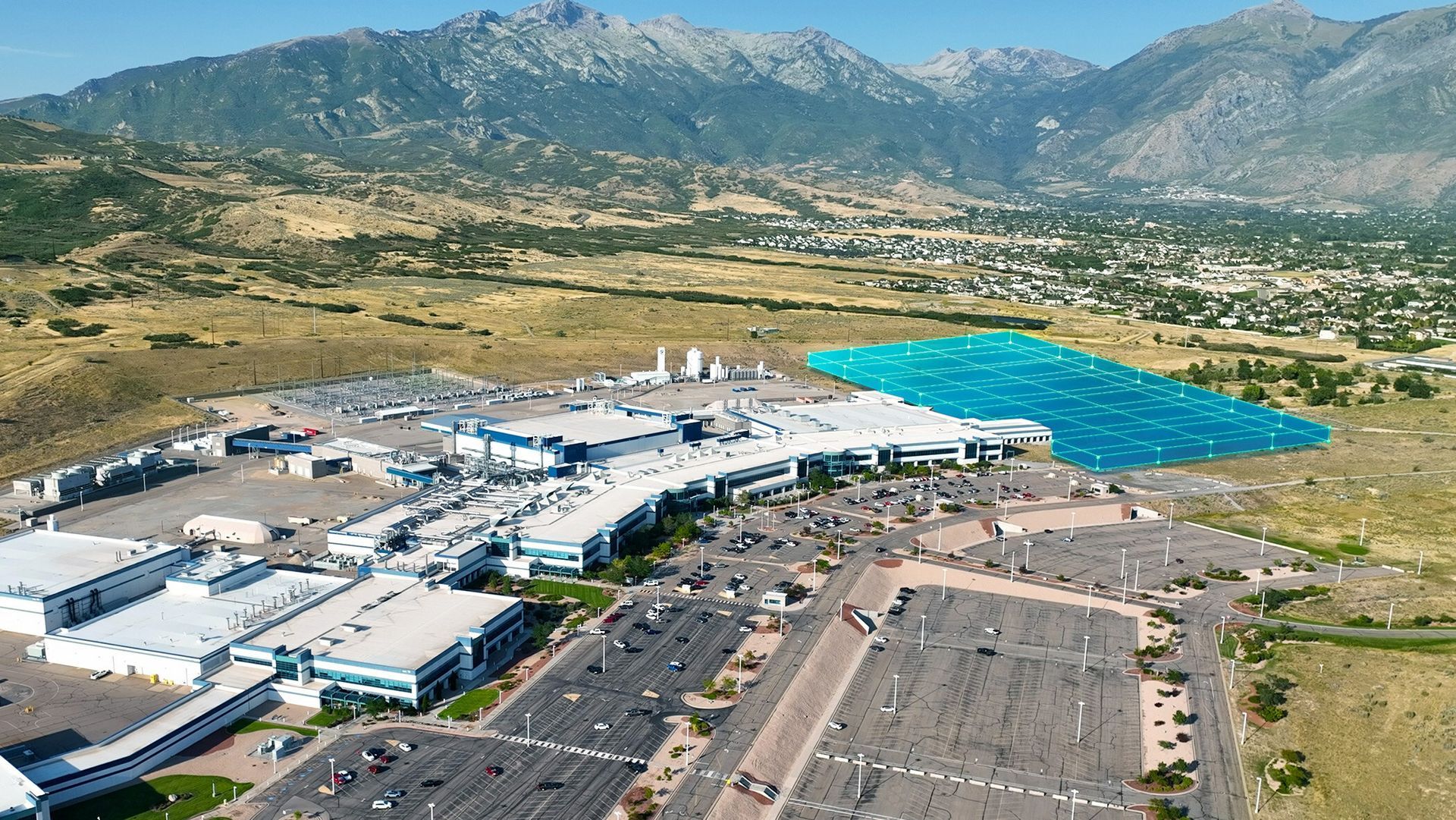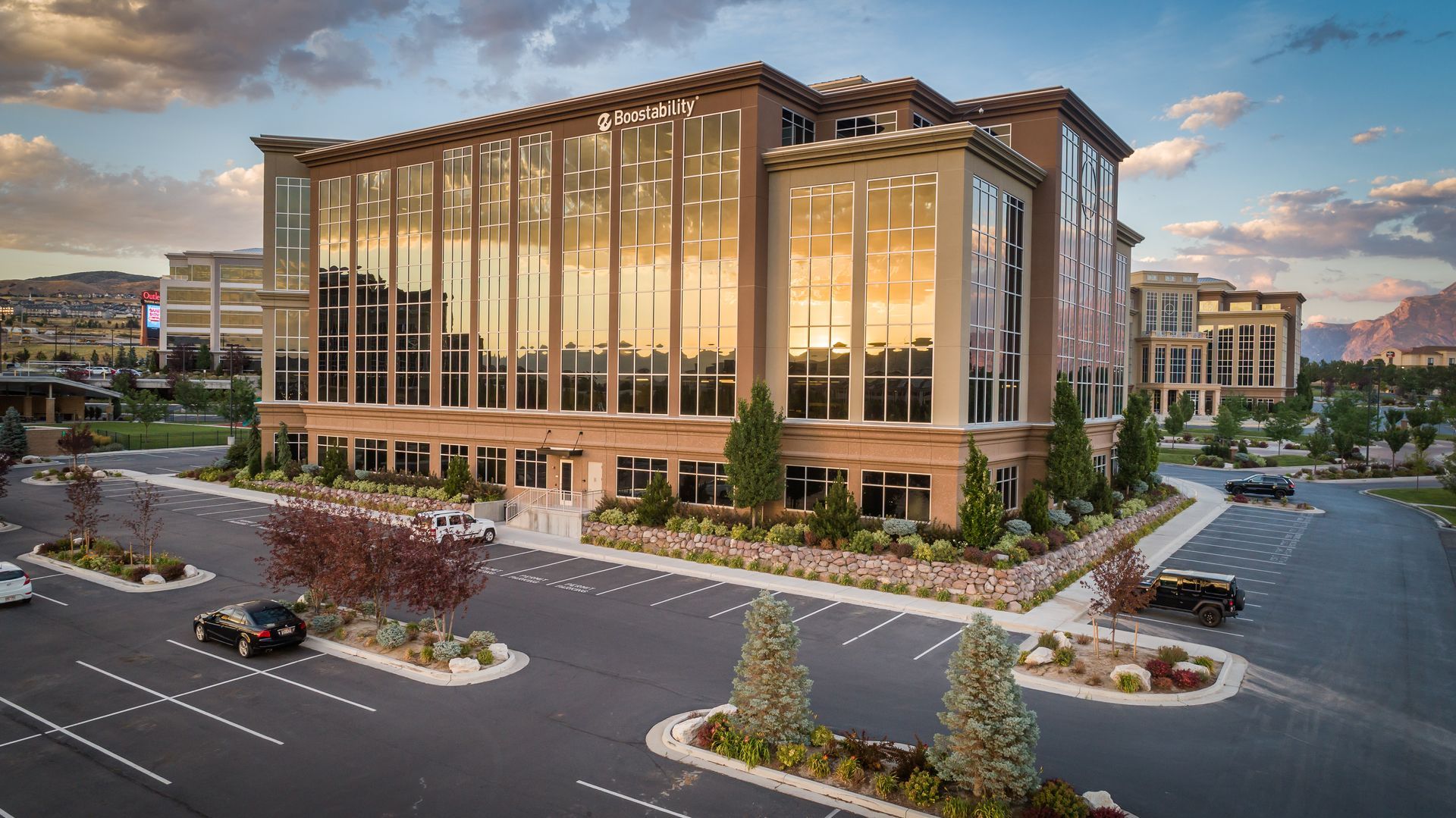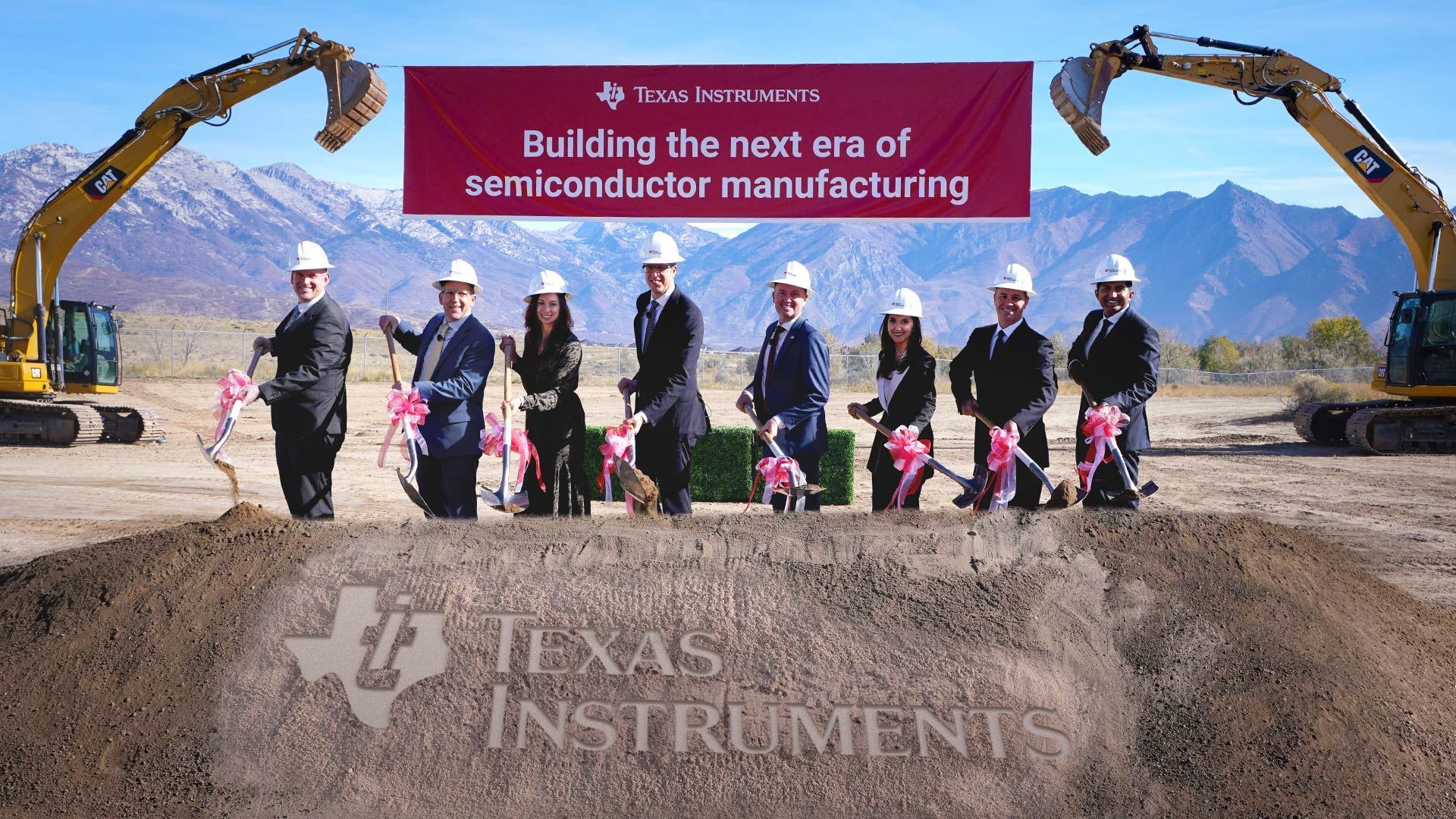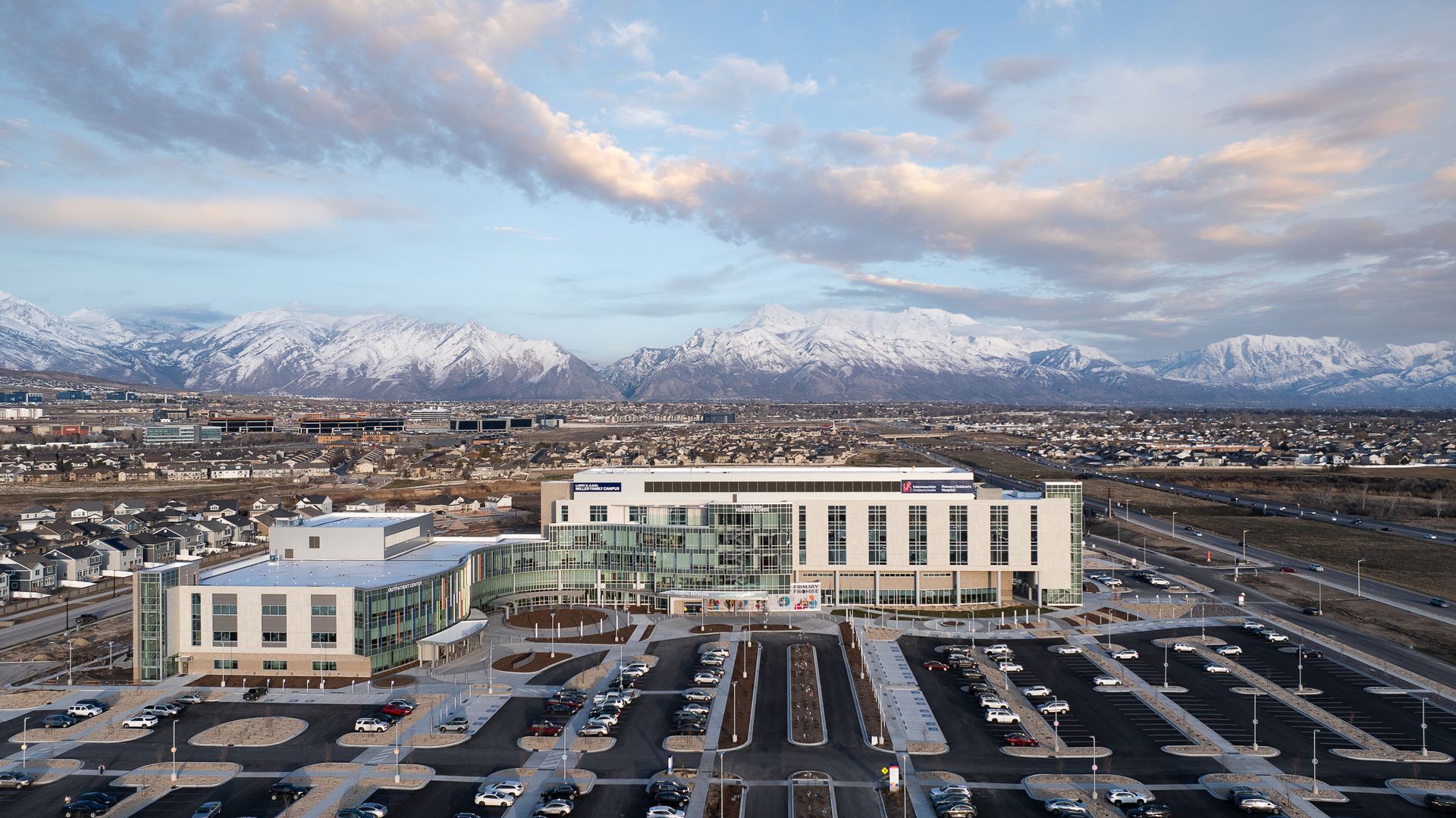Northernmost Utah County city has skyrocketed to No. 6 in overall population, with a sizzling 5% growth the past four years, a plethora of high-profile office and retail projects, and a jaw-dropping $11 billion investment by Texas Instruments. By Brad Fullmer

Located in the heart of the economically robust Silicon Slopes region, it stands to reason that Lehi City would reap the rewards of a dizzying amount of construction the past decade—and it has, with a lot more activity to come, says Marlin Eldred, the City's Economic Development Director the past seven-plus years.
"There has been substantial growth across the board," said Eldred, who joined Lehi City in October 2016, and has witnessed first-hand its population skyrocket during that time. Lehi has exploded from just over 61,000 people to 93,285—an increase of more than 30,000—making it Utah's sixth-largest city according to World Population Review, leapfrogging the likes of Orem and Sandy. According to the U.S. Census, Lehi's 5% growth the past four years (more than 15,000) is highest among Utah's top 10 cities.
Sizzling growth certainly was one of the factors that contributed to Texas Instruments' decision to invest a jaw-dropping $11.5 billion in an expansion of its chip plant location in the north part of Lehi.
Eldred said that has led to a plethora of multi-family projects to coincide with the dozens of new commercial office buildings that have also sprouted up since 2013. He said in 2016, there were 620 apartment units built the entire year. In 2021 and 2022, those numbers were 2,198 and 2,249, respectively.
"Even though we were supposed to see a dip in the economy with rising interest rates, the numbers have been good," said Eldred.
In addition, it reverses what the housing market has historically seen in the past.
"Since 2015-2016, developers were building 80% single family units and 20% multi-family—that has pretty much reversed and we're now seeing 60% to 70% of development being multi-family projects," he said.
Huge Need for Affordable Housing
Eldred reiterated what many government officials have bluntly been saying since the end of the pandemic: Utah needs more affordable housing, period.
"We've got the jobs, we've got the retail and [more is] coming, but we also need affordable housing," said Eldred. "That's the third leg of the stool. It's been going gangbusters; I just hope that the price point stays reasonable, and we can continue to attract people. Our housing numbers, as far as cost per month, will be comparable to South Jordan, Herriman, some of those areas. The other side of that coin is, [housing costs] will be driven by amenities. People are willing to pay a higher price if they can walk to or are near a shopping experience."
The City is working with Thanksgiving Point on a new area plan that would include 2,000 multifamily units, one million square feet of Class A Office space, and over 100,000 square feet of retail space. Last year, the Sky area plan was approved, which calls for another 2,700 residential units, along with commercial and retail space around Texas Instruments' plant.
Salt Development also broke ground on a 570-unit multi-family project that will be similar to its bar-raising 4th West apartment complex in Salt Lake.
"If everything that is in the works comes to fruition, the face of Lehi will change within the next 5-10 years," said Eldred, adding that the City also recently bonded for $65 million to install its own fiber backbone to every resident, a process that should be done by mid-2026.
The recent completion of 38-acre Intermountain Primary Children's Hospital, Miller Family Campus, also is a testament to Lehi's prominent growth. At a cost of $335 million, it marks the largest healthcare project in Lehi's history, and one of the largest in the entire state. (UC+D will publish a feature article of this project in our next issue).
What About TRAX?
Public transit in Utah County has made significant progress with the advent of FrontRunner lines the past decade, but the reality of Utah Transit Authority investing in a TRAX line into Utah County is still light (rail) years away, and that, Eldred said, needs to change for Lehi (and other neighboring cities) to become more complete communities.
And with the face of Lehi looking to transition in the next 3-5 years into more of a retail destination, mass transit will be essential to limiting traffic and providing legitimate transportation alternatives for future generations.
“I think as Utahns we need to do a better job at utilizing more public transit, get out of our cars, and walk, bike etc.," said Eldred. "And again, you have to create that environment for people to be able to do that. I look at New York, Boston, [Washington] D.C. [...] whenever I go visit, I take public transportation, I don’t even bother renting a car as we can get anywhere we need to with public transit. With some of the retail that we are looking at bringing in, Lehi will become a [more attractive] shopping and dining experience. Having transit around the point of the mountain would definitely help with everything we’ve got planned.
"We need to focus on what it will take to get transit around the mountain and get it through Lehi," he added. "Selfishly, I just want it through Lehi, but the reality of it is we need it all the way down to Provo, because we want to be able to draw [residents] from the north and the south.”
TI's Historic Investment a Real Game Changer
It's been just over a year ago (February 2023) when Texas Instruments (TI) announced its stunning decision to invest $11.5 billion—the largest investment in state history—to build its new 300-mm semiconductor wafer fabrication plant (LFAB2) in Lehi, with the project officially breaking ground November 2. When completed in 2026, it will connect to TI's existing 300-mm wafer fab giving the two fabs the ability to manufacture tens of millions of analog and embedded chips daily.
"Today we take an important step in our company's journey to expand our manufacturing footprint in Utah. This new fab is part of our long-term, 300-mm manufacturing roadmap to build the capacity our customers will need for decades to come," said TI President and Chief Executive Officer Haviv Ilan. "At TI, our passion is to create a better world by making electronics more affordable through semiconductors. We are proud to be a growing member of the Utah community, and to manufacture analog and embedded processing semiconductors that are vital for nearly every type of electronic system today."
"TI's growing manufacturing presence in Utah will be transformative for our state, creating hundreds of good-paying jobs for Utahns to manufacture critically important technology," said Utah Governor Spencer Cox. "We are proud that semiconductors—made in Utah by Utahns—will power the innovation that is foundational to our country's economic and national security."
As part of its commitment to responsible, sustainable manufacturing, TI said the LFAB2 project will be one of the company's most environmentally efficient wafer fabs, designed to meet LEED Gold v4. LFAB2 has a goal to be powered by 100% renewable electricity, and advanced 300-mm equipment and processes in Lehi will further reduce waste, water and energy consumption. In fact, LFAB2 is expected to recycle water at nearly twice the rate of TI's existing fab in Lehi.
In addition, as part of TI's commitment to education, the company also announced that it will invest $9 million dollars in the Alpine School District to develop the state's first Science, Technology, Engineering and Math (STEM) learning community for all students in kindergarten through 12th grade. The multiyear program will embed STEM concepts more deeply into coursework for the district's 85,000 students and provide STEM-oriented professional development for its teachers and administrators. The district-wide program will equip students with essential STEM skills, such as critical thinking, collaboration and creative problem-solving to succeed after graduation.
"We are excited this partnership will help our students develop essential knowledge and skills, preparing them for success in life and possible careers in the technology sector," said Alpine School District Superintendent, Dr. Shane Farnsworth. "Working together with the city of Lehi, Texas Instruments, and our schools, this collaborative investment will impact students and their families for many generations to come."
Eldred said the TI project was a huge win for not only Lehi City, but the entire state.
"It's the largest investment by one company in the state of Utah, and it was a huge effort by all parties involved to get that across the finish line," said Eldred. "We were competing against at least two other states—Arizona and Virginia—and we put forth some very, very attractive proposals."
































